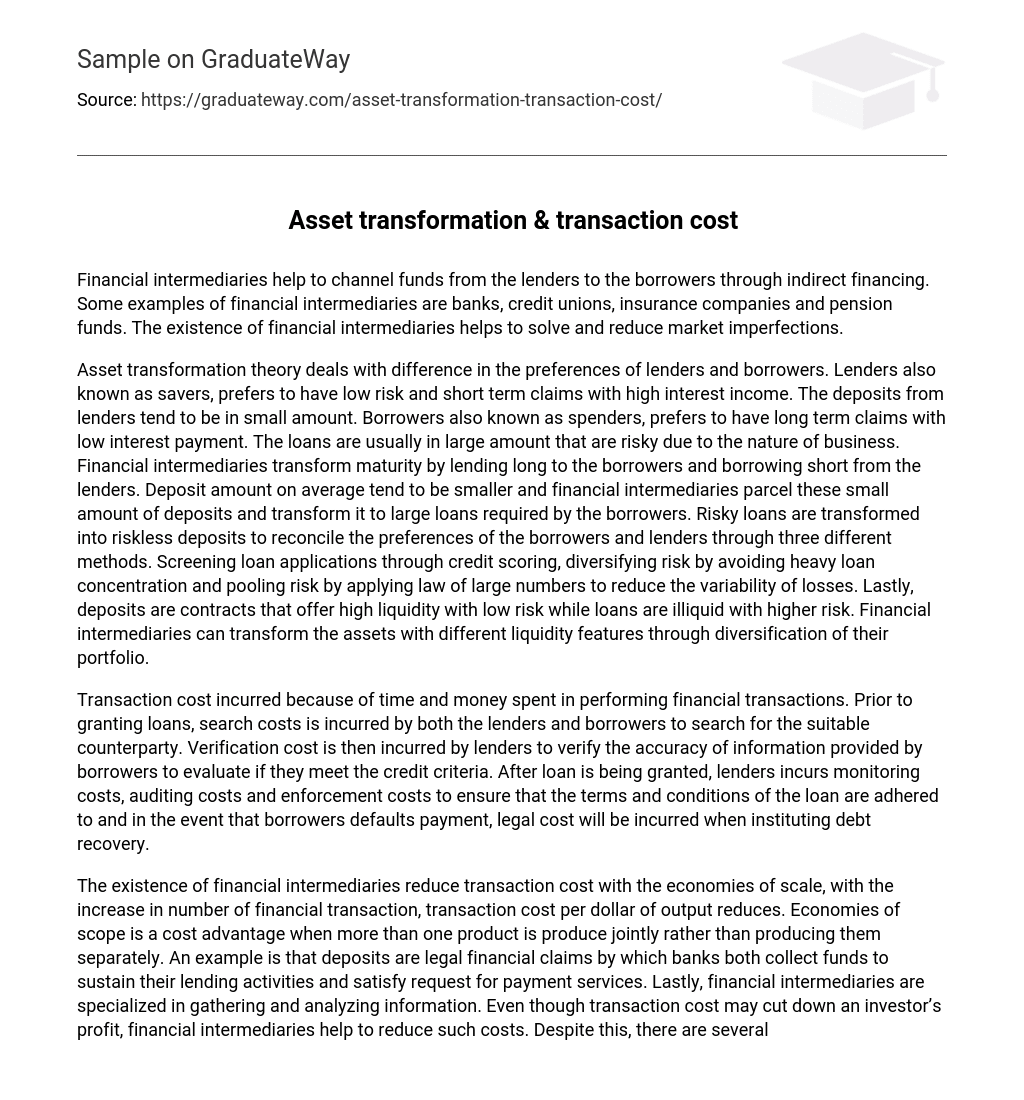Financial intermediaries, such as banks, credit unions, insurance companies, and pension funds, play a crucial role in facilitating the transfer of funds from lenders to borrowers through indirect financing. These intermediaries help address and minimize market imperfections.
Asset transformation theory addresses the disparity in preferences between lenders and borrowers. Lenders, also referred to as savers, prefer low-risk, short-term claims with high interest income. Their deposits are typically small in amount. Borrowers, on the other hand, prefer long-term claims with low interest payments. The loans they seek are often large and carry higher risks due to their business nature. Financial intermediaries bridge this maturity gap by lending to borrowers for longer terms and borrowing from lenders for shorter terms.
In order to reconcile the preferences of lenders and borrowers, financial intermediaries employ three methods to transform risky loans into riskless deposits. They screen loan applications using credit scoring, diversify risk by avoiding heavy concentrations of loans, and pool risk by applying the law of large numbers to reduce losses’ variability. Meanwhile, deposits offer high liquidity with low risk, while loans are illiquid with higher risk. Through portfolio diversification, financial intermediaries are able to transform assets with varying liquidity features.
Transaction cost includes the expenses, in terms of both time and money, associated with conducting financial transactions. These costs are incurred by lenders and borrowers before loans are granted. Both parties incur search costs while looking for a suitable counterparty. Lenders also have verification costs as they confirm the accuracy of borrower-provided information to determine creditworthiness. After granting a loan, lenders continue to bear monitoring, auditing, and enforcement costs to ensure compliance with loan terms and conditions. In case of payment default by borrowers, legal costs arise during debt recovery procedures.
Financial intermediaries help to reduce transaction costs through economies of scale, meaning that as the number of financial transactions increases, the transaction cost per dollar of output decreases. They also benefit from economies of scope, which is a cost advantage of producing multiple products together rather than separately. For example, deposits are legal financial claims that banks use to both collect funds for lending activities and meet payment service requests.
In addition to reducing transaction costs, financial intermediaries specialize in gathering and analyzing information. Although transaction costs can decrease an investor’s profit, financial intermediaries play a vital role in minimizing these costs. It is important to note that there are unavoidable fees associated with financial market assets, but they are typically worth the cost considering the potential returns.





